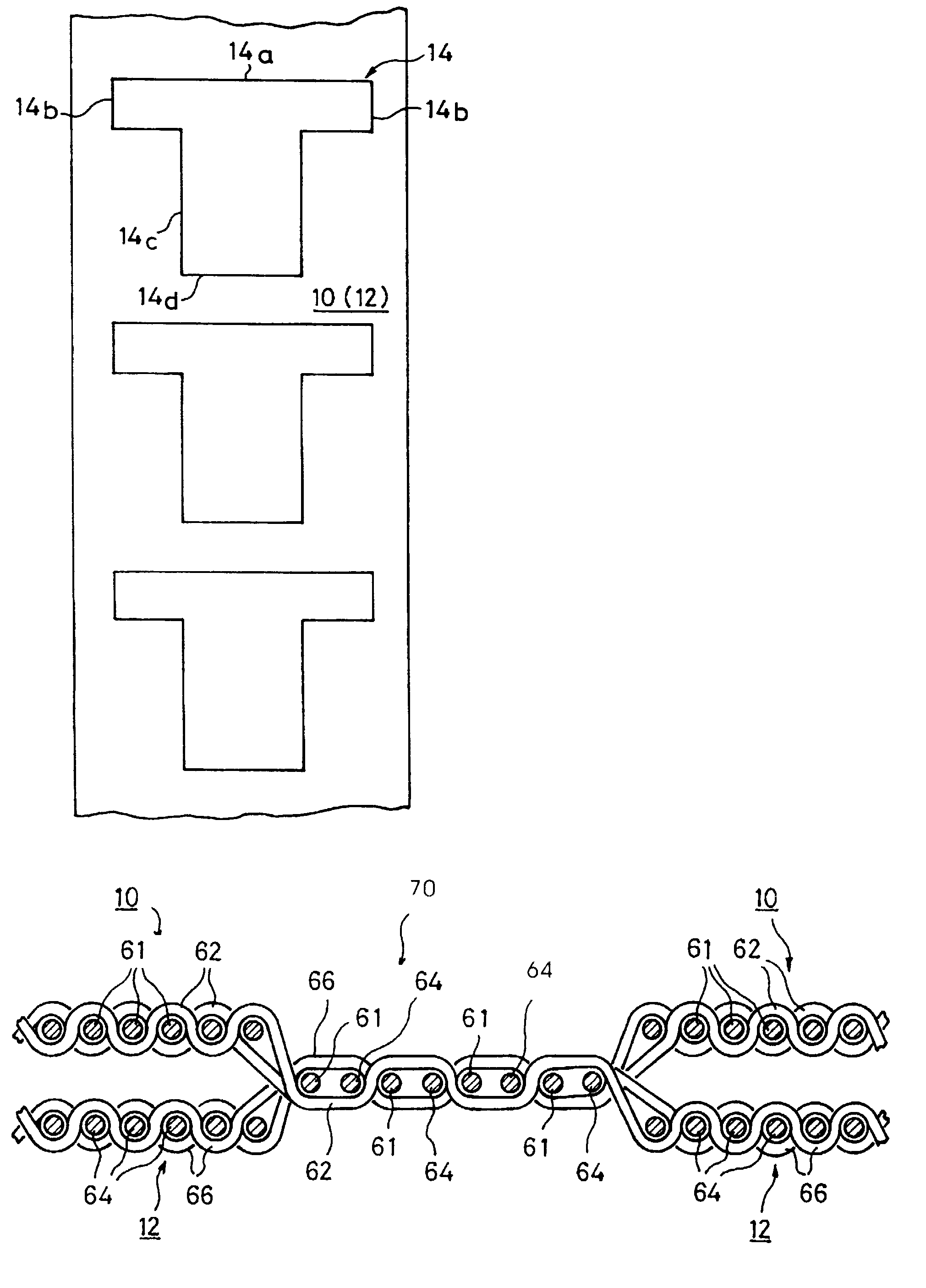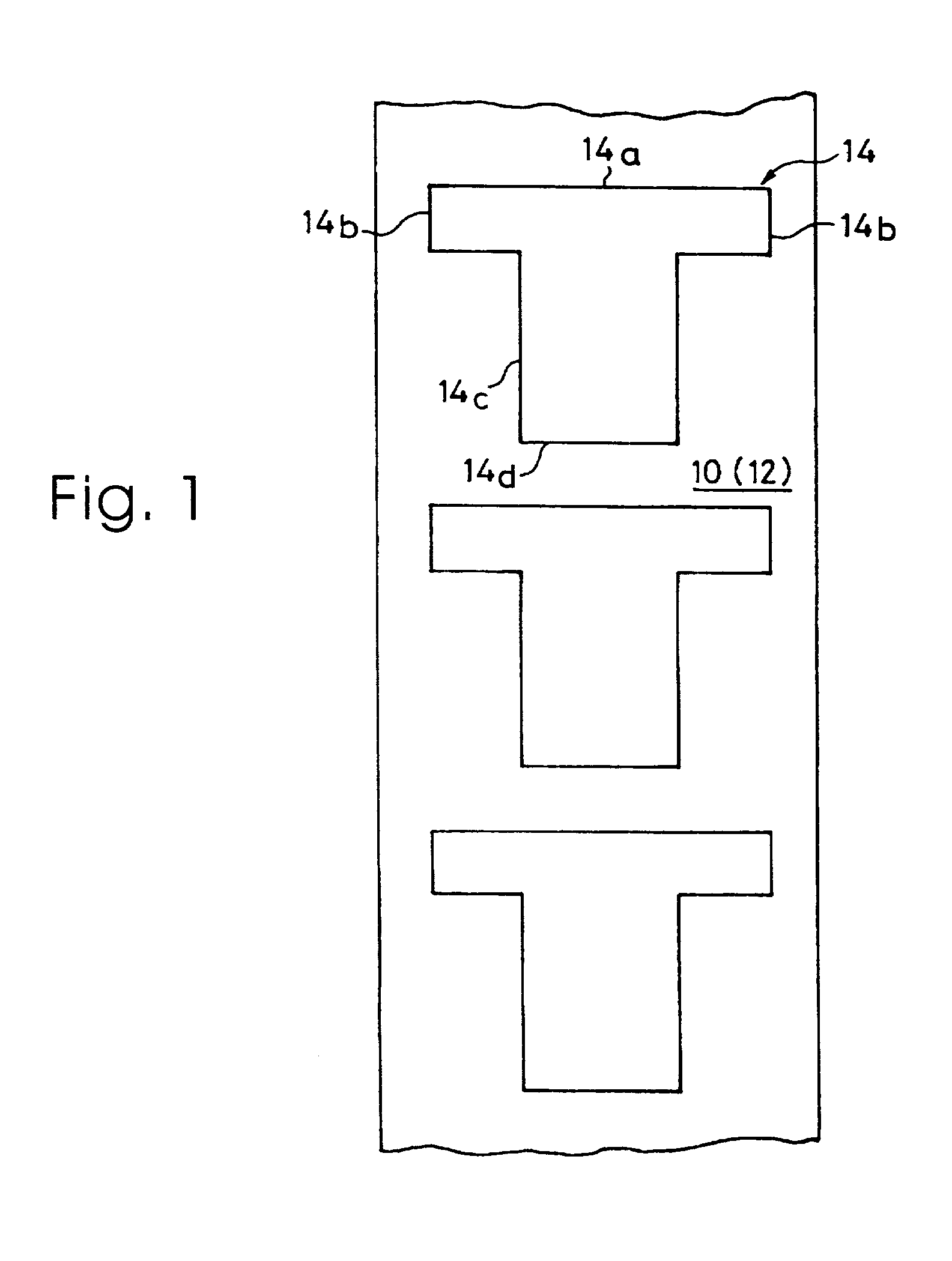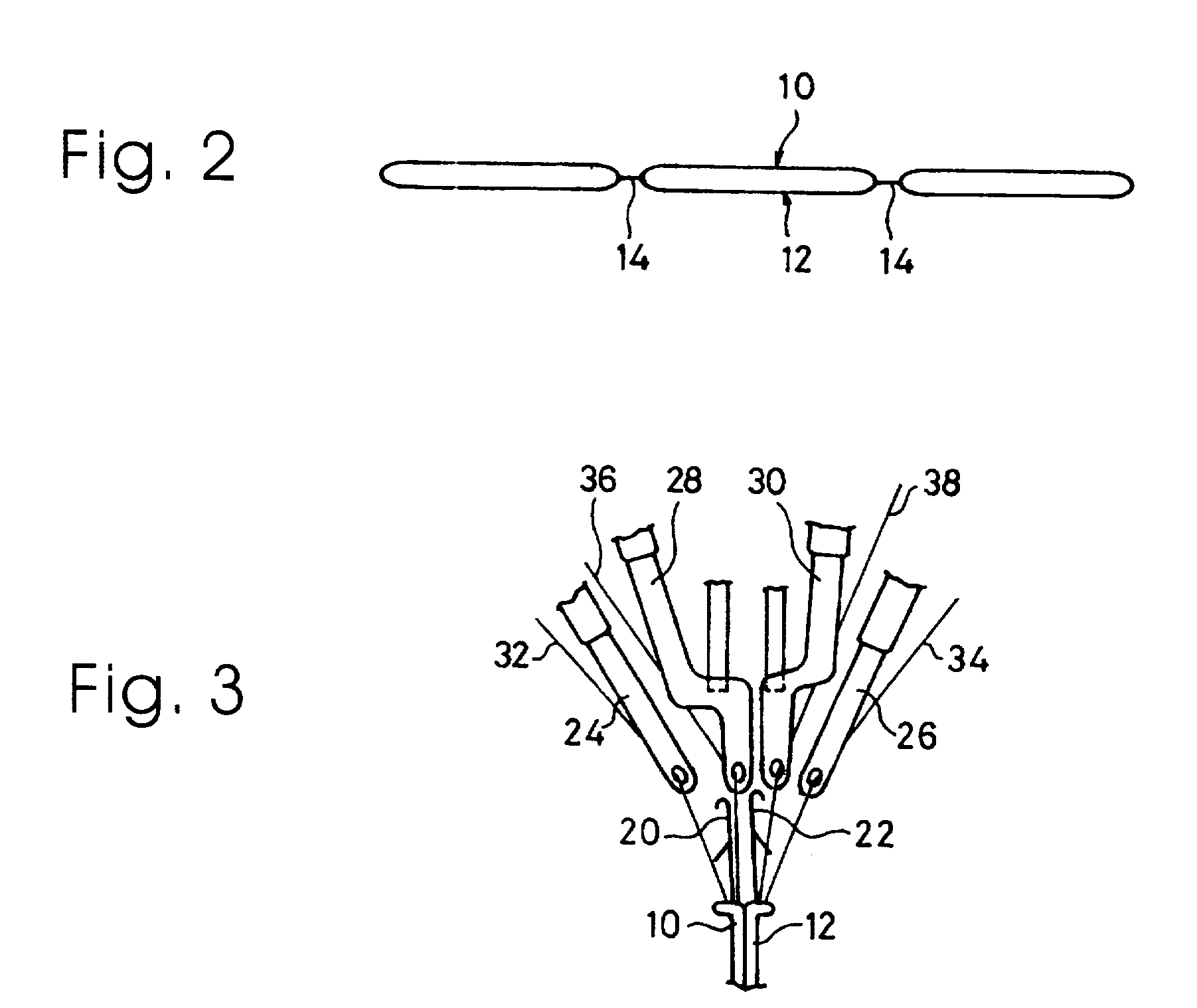Fabric and method for obtaining garment therefrom and garment
a technology of fabric and garment, applied in the direction of ornamental textile articles, knitting, cloth making applications, etc., can solve the problems of a conventional way of producing ready-made garments, a large problem, and a difficult automatic process
- Summary
- Abstract
- Description
- Claims
- Application Information
AI Technical Summary
Problems solved by technology
Method used
Image
Examples
first embodiment
In the first embodiment, the fabric is obtained by using a raschel warp knitting machine having at least two ground guide bars and at least two jacquard guide bars. Namely, FIG. 3 illustrates schematically raschel warp knitting machine, which includes two arrays (beds) of needles 20 and 22, two arrays of ground guide bars (beds) 24 and 26 arranged to be faced with the needle arrays 20 and 22, respectively and two arrays of jacquard guide bars 28 and 30. The ground guide bars 24 have eyelets through which warp yarns 32 are passed. As a result of well known knitting motion of the needles 20 together with the guiding movement of the guide bars 24, the first layer 10 of weft knitted fabric is created. Similarly, the ground guide bars 26 have eyelets through which warp yarns 34 are passed. In the similar way, the second layer 12 of weft knitted fabric is created. The first and second layers 10 and 12 are at non-stitched parts separate from each other. Furthermore, the jacquard guide bars...
third embodiment
In short, the third embodiment makes it possible to obtain a fabric having an upper and a lower layers which are separated from each other except as locations along a closed outline of an unfinished or semi-finished garment. In the similar way as explained with reference to FIGS. 4A and 4B, what is done in order to obtain a garment from the fabric is a desired cutting of the fabric along the closed counter in accordance with the result of a size measurement and / or the preference of a customer. Thus, the garment as cut out can be just fit to the customer's requirement.
In FIG. 1, the closed outline of a fabric as a pattern to be repeated is shown in such a manner that the outline extends in a direction parallel to the warp or weft direction. However, a more usual arrangement of the outline on the garment will be such that the stitching line extends, mainly, in any direction which is not parallel to warp direction nor to weft direction. However, the use of the jacquard mechanism makes ...
PUM
 Login to View More
Login to View More Abstract
Description
Claims
Application Information
 Login to View More
Login to View More - R&D
- Intellectual Property
- Life Sciences
- Materials
- Tech Scout
- Unparalleled Data Quality
- Higher Quality Content
- 60% Fewer Hallucinations
Browse by: Latest US Patents, China's latest patents, Technical Efficacy Thesaurus, Application Domain, Technology Topic, Popular Technical Reports.
© 2025 PatSnap. All rights reserved.Legal|Privacy policy|Modern Slavery Act Transparency Statement|Sitemap|About US| Contact US: help@patsnap.com



